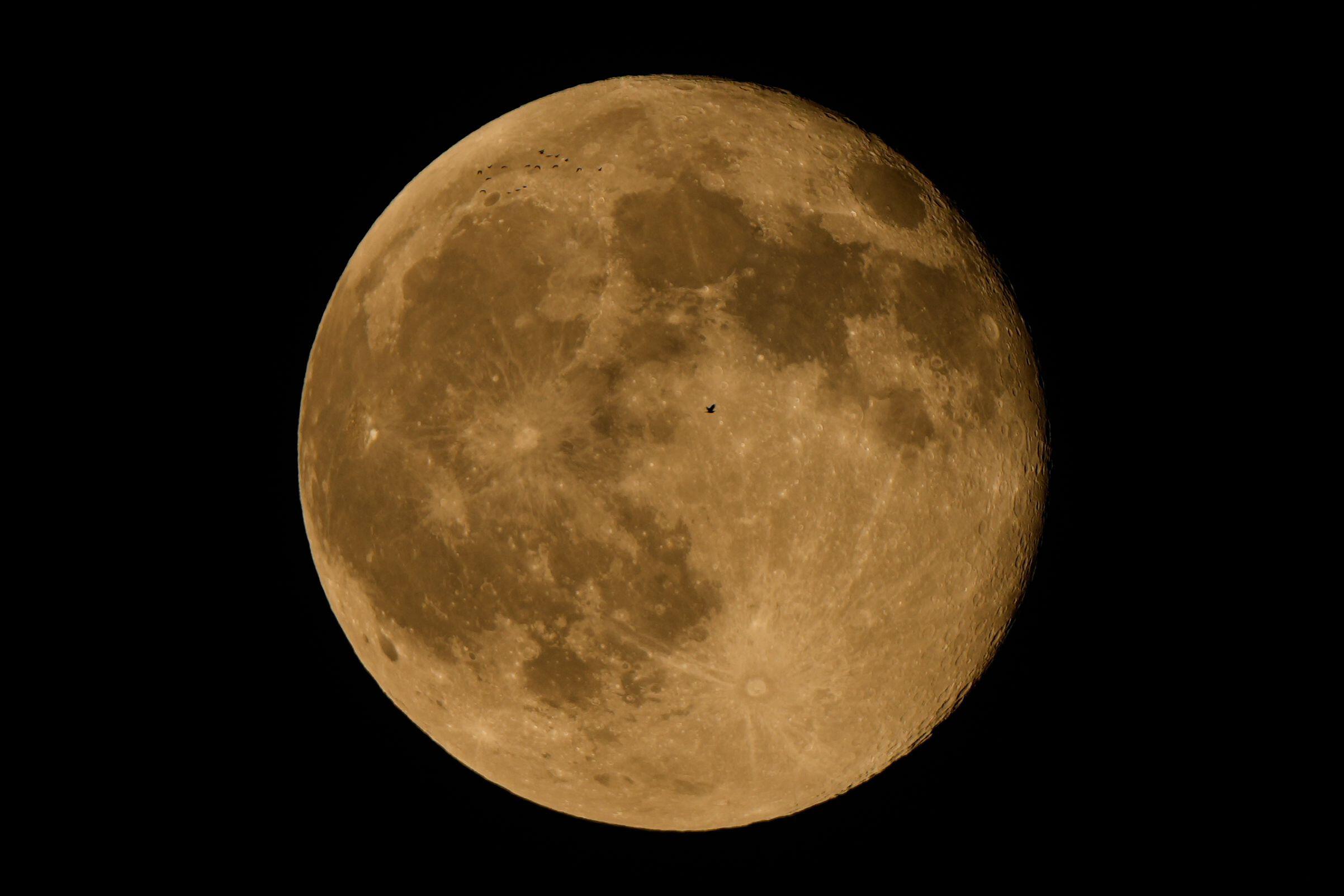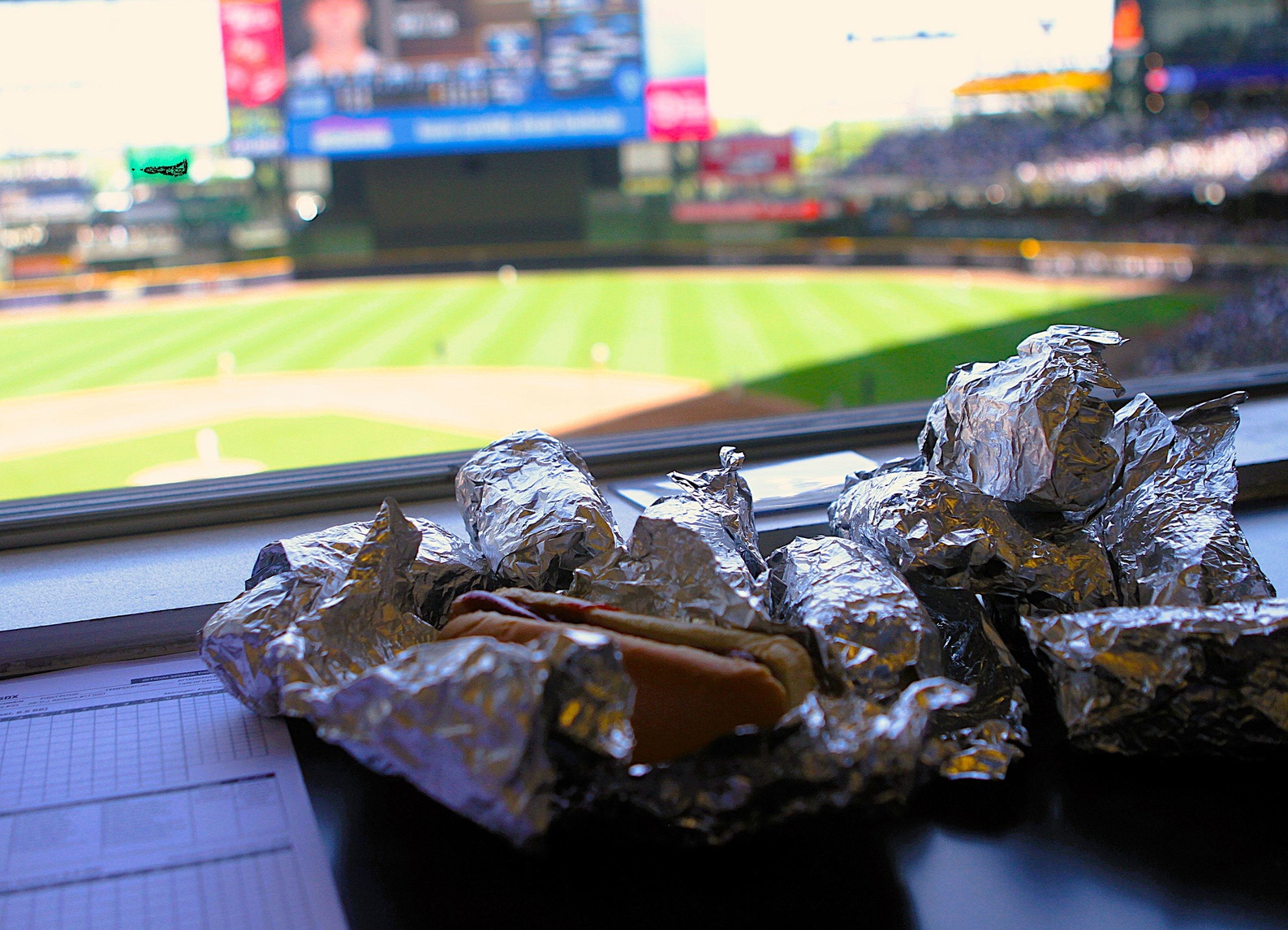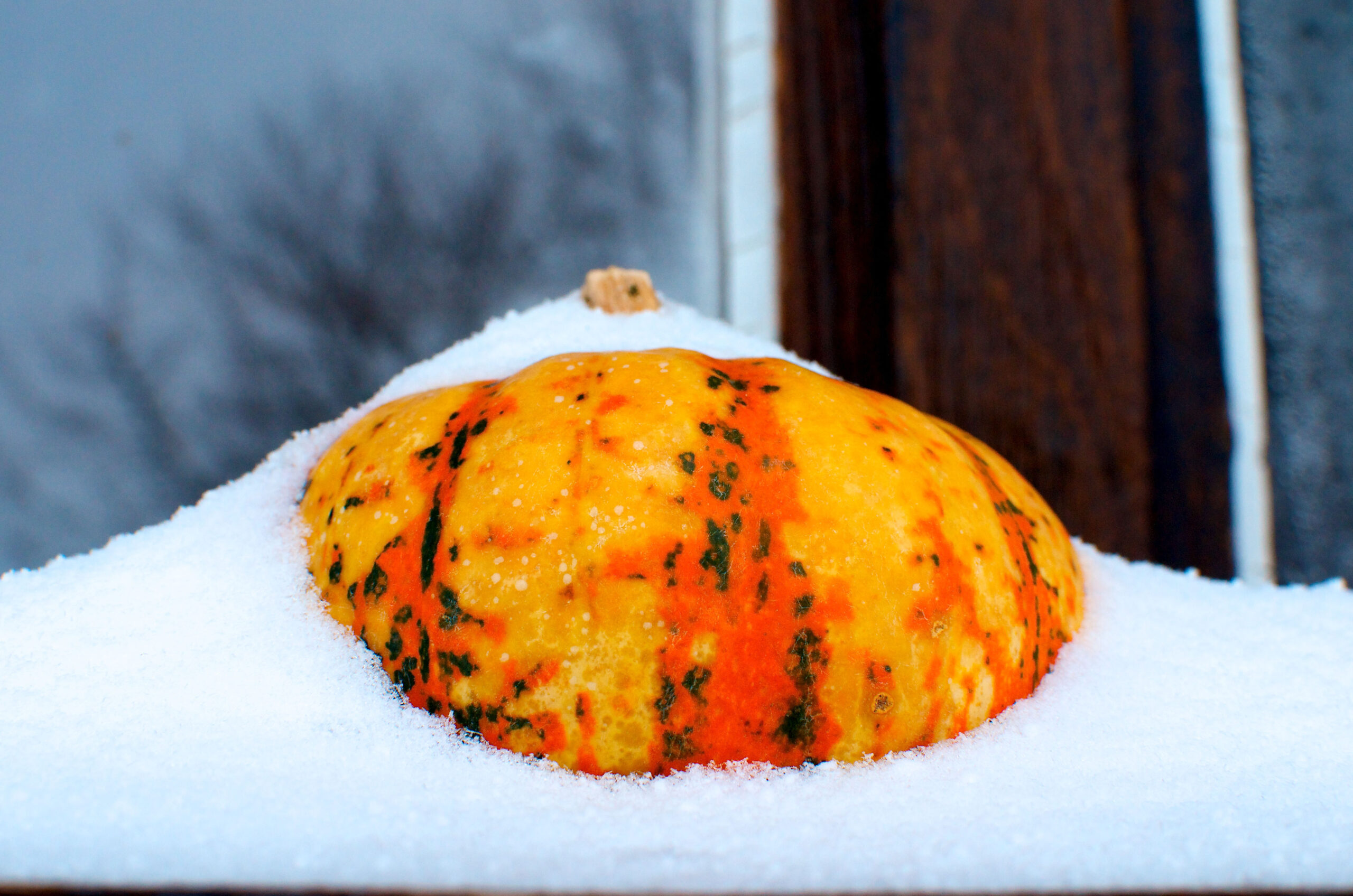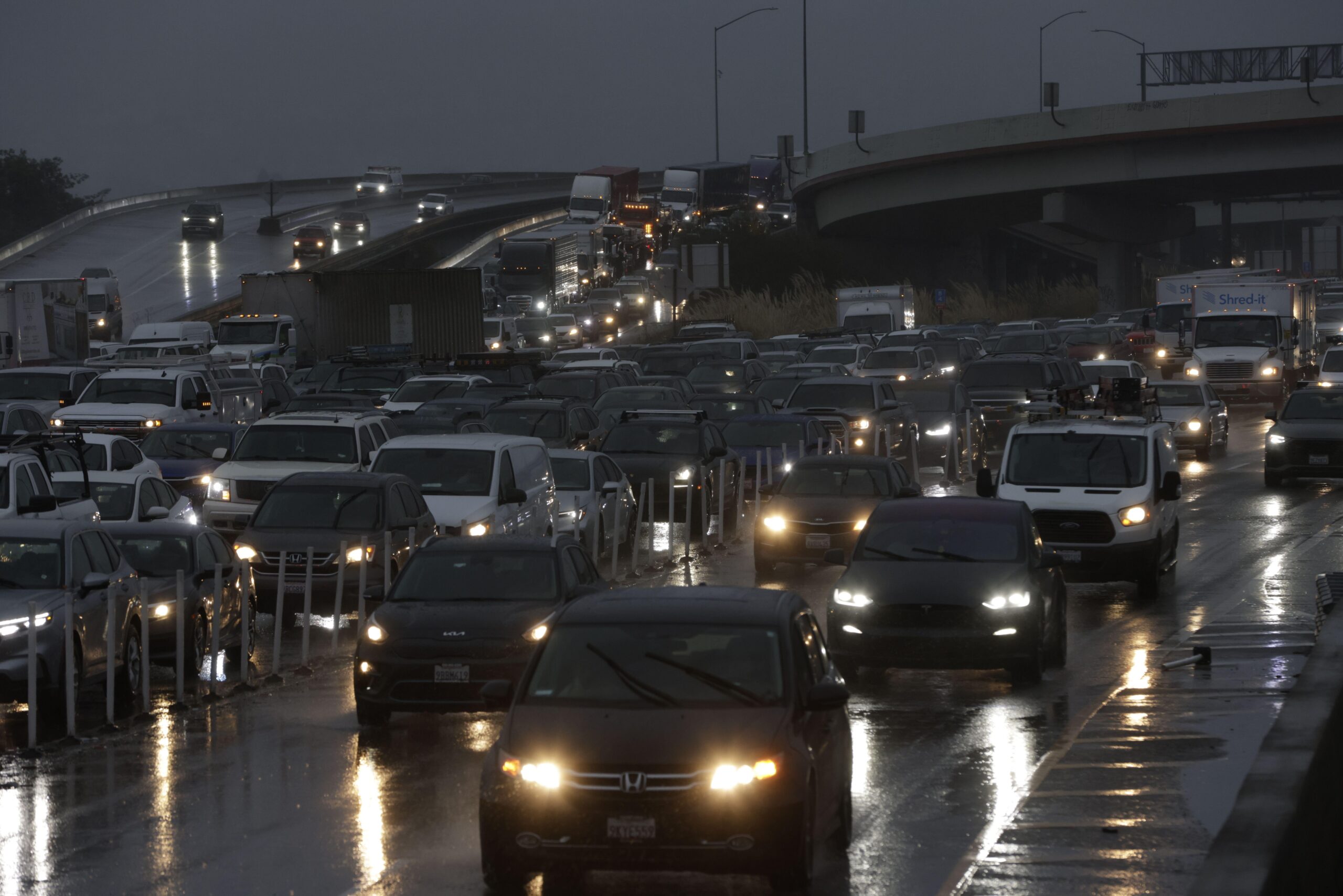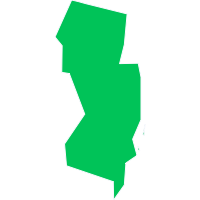If you’ve ever stepped outside to catch the glow of a full supermoon lighting up the night sky, you’re not alone.
In 2025, Americans have been looking up more than ever, turning celestial events into viral moments and planning trips around stargazing, moonrises, and other night-sky experiences.
And December’s event is one of the biggest of the year. The final full Moon of 2025 is also a Cold Moon Supermoon, rising brighter and appearing slightly larger than usual as it climbs into early-winter skies.
But while everyone can enjoy the moonrise, not every state offers the same viewing conditions. Factors like cloud cover, humidity, elevation, and light pollution can make or break your shot at a crystal-clear supermoon, and now, there’s data to back it up.
The odds experts at The Action Network have created an implied probability and its equivalent moneyline odds based on sky clarity, elevation, and atmospheric conditions across all 50 states, forming the Supermoon Visibility Index. This reveals where in America you’re most likely to witness December’s Cold Moon Supermoon in all its glory.
Top States to See the December Supermoon Clearly in 2025
These are the 10 best states to view December’s Cold Moon Supermoon, based on our composite Supermoon Visibility Index and their corresponding implied probability of a clear view.
1. New Mexico (Implied Probability: 27.83% | Moneyline Odds: +259)
New Mexico leads the nation thanks to exceptional elevation, dry air, and some of the darkest skies in the United States.
- Average Humidity: 53.33%
- Average Clear-Sky Days: 18.67
- Average Elevation: 5,700 ft
- Darkness Score: 4.24 / 5
High desert conditions give New Mexico remarkably consistent winter visibility.
2. Arizona (Implied Probability: 26.70% | Moneyline Odds: +275)
Arizona remains one of America’s top sky-watching states, just behind New Mexico.
- Average Humidity: 51.88%
- Average Clear-Sky Days: 18.4
- Average Elevation: 4,100 ft
- Darkness Score: 4.13 / 5
Low humidity and dry desert air keep Arizona’s skies clear and bright.
3. Colorado (Implied Probability: 25.05% | Moneyline Odds: +299)
Colorado’s high elevation gives it a major visibility advantage.
- Average Humidity: 59%
- Average Clear-Sky Days: 16.4
- Average Elevation: 6,800 ft — highest in the U.S.
- Darkness Score: 4.11 / 5
The thin mountain atmosphere provides crisp lunar visibility even in winter.
4. Nevada (Implied Probability: 21.67% | Moneyline Odds: +361)
Nevada’s desert climate and minimal light pollution make it one of the clearest states for night-sky viewing.
- Average Humidity: 60.7%
- Average Clear-Sky Days: 13.4
- Average Elevation: 5,500 ft
- Darkness Score: 4.40 / 5
Its exceptionally dark skies push Nevada into the national top tier.
5. Wyoming (Implied Probability: 21.52% | Moneyline Odds: +365)
Wyoming offers a powerful combination of high elevation and clean, dark air.
- Average Humidity: 62.75%
- Average Clear-Sky Days: 13
- Average Elevation: 6,700 ft
- Darkness Score: 4.33 / 5
Even with fewer clear days, Wyoming’s bright, unpolluted skies keep it near the top.
6. California (Implied Probability: 18.69% | Moneyline Odds: +435)
California’s geographic variety creates many excellent viewing spots, from the Sierra Nevada to the Mojave Desert.
- Average Humidity: 66.35%
- Average Clear-Sky Days: 13.85
- Average Elevation: 2,900 ft
- Darkness Score: 4.18 / 5
Despite coastal moisture, inland regions offer outstanding visibility.
7. Kansas (Implied Probability: 17.77% | Moneyline Odds: +463)
Kansas performs well thanks to consistent weather and wide-open horizons.
- Average Humidity: 69.3%
- Average Clear-Sky Days: 14.6
- Average Elevation: 2,000 ft
- Darkness Score: 4.00 / 5
Reliable winter conditions make Kansas one of the central U.S. leaders for night-sky viewing.
8. Hawaii (Implied Probability: 17.53% | Moneyline Odds: +470)
Hawaii’s remote location and volcanic mountains help it land in the top ten.
- Average Humidity: 72.38%
- Average Clear-Sky Days: 14.25
- Average Elevation: 3,030 ft (with much higher peaks available)
- Darkness Score: 4.06 / 5
Higher-elevation sites like Mauna Kea are among the best astronomical locations in the world.
9. Texas (Implied Probability: 17.22% | Moneyline Odds: +481)
Texas offers expansive viewing opportunities, especially across its western deserts.
- Average Humidity: 67.06%
- Average Clear-Sky Days: 13.73
- Average Elevation: 1,700 ft
- Darkness Score: 3.93 / 5
Large rural regions and low light pollution boost Texas’s visibility odds.
10. Utah (Implied Probability: 16.99% | Moneyline Odds: +489)
Utah’s national parks and remote dark-sky areas keep it firmly in the top ten.
- Average Humidity: 74.5%
- Average Clear-Sky Days: 11.5
- Average Elevation: 6,100 ft
- Darkness Score: 4.26 / 5
Even with higher humidity, Utah’s elevation and world-class dark-sky regions deliver excellent clarity.
Notable Mentions Beyond the Top 10
While the top 10 states lead the nation for sky clarity, elevation, and dark-sky quality, several others also show strong potential for clear Supermoon viewing—particularly across the Plains, Midwest, and Southeast, where December weather patterns and rural terrain help create dependable night-sky conditions.
Oklahoma (Rank 11)
Oklahoma leads the group just outside the top 10, with a strong balance of clear-sky days (14.5) and moderate humidity. Its open plains and low light pollution contribute to a solid darkness score of 3.47 / 5, making it one of the more reliable central U.S. locations for Supermoon viewing.
Nebraska (Rank 12)
Nebraska pairs relatively high elevation (2,600 ft) with crisp winter air, delivering a darkness score of 3.83 / 5. With more than 13 clear-sky days on average in December, the state offers consistently favorable conditions across its rural landscapes.
Virginia (Rank 13)
With moderate humidity and stable early-winter weather, Virginia performs well thanks to the Blue Ridge and Appalachian foothills. Its darkness score of 3.5 / 5 reflects the quality of its rural and mountain viewing locations.
North Carolina (Rank 14)
North Carolina closely trails Virginia, benefiting from Appalachian dark-sky zones in the west and steady December conditions statewide. A darkness score of 3.5 / 5 and nearly 14 clear-sky days make it a strong Mid-Atlantic contender.
Florida (Rank 15)
Despite very low elevation, Florida ranks surprisingly high due to its excellent December sky clarity—averaging nearly 15 clear days. Its darkness score of 3.75 / 5 highlights the visibility potential found in rural inland regions and the Florida Panhandle.
Arkansas (Rank 16)
Arkansas posts a strong darkness score of 4.00 / 5, supported by moderate humidity and consistent winter stability. The Ozark region, in particular, provides excellent night-sky conditions this time of year.
New Hampshire (Rank 17)
New Hampshire stands out among Northeastern states thanks to rural terrain, clean winter air, and a high darkness score of 4.09 / 5. Its crisp December nights help offset relatively fewer clear-sky days.
South Dakota (Rank 18)
South Dakota combines elevated plains (2,200 ft) with rural darkness and wide horizons. With a darkness score of 4.07 / 5, it remains one of the stronger northern states for winter sky viewing, even with slightly fewer clear days.
South Carolina (Rank 19)
While humidity can be higher along the coast, inland South Carolina offers dependable visibility, averaging 13 clear-sky days in December. Its darkness score of 3.00 / 5 reflects moderate light pollution levels across the state.
Georgia (Rank 20)
Georgia rounds out the top 20, benefiting from reliable winter weather and a darkness score of 3.29 / 5. Northern Georgia and rural regions outside Atlanta still offer strong viewing potential despite modest elevation.
States Least Likely to See the Supermoon Clearly in 2025
While the Southwest dominates thanks to clear skies and dry air, several northern, Midwestern, and coastal states face the opposite challenge—high humidity, persistent cloud cover, and difficult December weather patterns. These are the 10 states with the lowest Supermoon Visibility Index scores and the smallest implied probabilities of clear viewing this year.
41. Wisconsin (Implied Probability: 9.99% | Moneyline Odds: +901)
Wisconsin’s winter cloud cover and high humidity make December skywatching difficult.
- Average Elevation: 1,050 ft
- Average Clear-Sky Days: 9.25
- Average December Humidity: 75.88%
- Darkness Score: 3.40 / 5
Despite decent rural darkness, heavy moisture and frequent overcast conditions keep Wisconsin near the bottom of the list.
42. New Jersey (Implied Probability: 9.97% | Moneyline Odds: +903)
New Jersey struggles with intense light pollution and coastal humidity.
- Average Elevation: 250 ft
- Average Clear-Sky Days: 12
- Average December Humidity: 67%
- Darkness Score: 1.00 / 5 — one of the lowest in the nation
Urban glow and coastal moisture severely reduce New Jersey’s chances of a clear Supermoon view.
43. Kentucky (Implied Probability: 9.67% | Moneyline Odds: +934)
Kentucky’s humid conditions and limited clear nights lower its visibility odds.
- Average Elevation: 750 ft
- Average Clear-Sky Days: 9
- Average December Humidity: 72.62%
- Darkness Score: 3.00 / 5
Even with pockets of rural darkness, cloud-heavy early winter weather keeps viewing opportunities limited.
44. Vermont (Implied Probability: 9.00% | Moneyline Odds: +1011)
Vermont’s mountainous terrain offers darkness—but also attracts dense cloud cover.
- Average Elevation: 1,000 ft
- Average Clear-Sky Days: 6
- Average December Humidity: 72%
- Darkness Score: 4.00 / 5
Heavy moisture and extremely low clear-sky counts outweigh the state’s strong darkness score.
45. Oregon (Implied Probability: 7.90% | Moneyline Odds: +1166)
Oregon’s maritime climate brings near-constant clouds across much of the state in December.
- Average Elevation: 3,300 ft
- Average Clear-Sky Days: 5.25
- Average December Humidity: 82.06%
- Darkness Score: 4.22 / 5
While eastern Oregon has excellent dark skies, persistent statewide cloud cover keeps visibility low overall.
46. New York (Implied Probability: 7.65% | Moneyline Odds: +1207)
New York’s mix of humidity, haze, and dense urban lighting reduces its viewing odds significantly.
- Average Elevation: 1,000 ft
- Average Clear-Sky Days: 5.6
- Average December Humidity: 70.39%
- Darkness Score: 3.16 / 5
Upstate can occasionally provide clear skies, but cloud cover often dominates during December.
47. Michigan (Implied Probability: 6.83% | Moneyline Odds: +1364)
Great Lakes moisture makes Michigan one of the cloudiest states during early winter.
- Average Elevation: 900 ft
- Average Clear-Sky Days: 5.14
- Average December Humidity: 78.25%
- Darkness Score: 4.05 / 5
Even with excellent dark-sky regions, the combination of humidity and lake-effect clouds severely limits viewing chances.
48. Ohio (Implied Probability: 6.75% | Moneyline Odds: +1381)
Ohio sees few clear nights in December and struggles with high humidity levels.
- Average Elevation: 850 ft
- Average Clear-Sky Days: 6.5
- Average December Humidity: 76.12%
- Darkness Score: 3.00 / 5
Flat terrain doesn’t offset the state’s cloudy, moisture-heavy winter atmosphere.
49. Washington (Implied Probability: 6.31% | Moneyline Odds: +1485)
Washington ranks near the bottom due to notoriously cloudy winters and extremely high humidity.
- Average Elevation: 1,700 ft
- Average Clear-Sky Days: 5.5
- Average December Humidity: 83.75% — highest in the U.S.
- Darkness Score: 4.00 / 5
Even with excellent darkness east of the Cascades, statewide cloud cover makes clear views very rare.
50. Indiana (Implied Probability: 5.84% | Moneyline Odds: +1612)
Indiana finishes last due to a mix of low elevation, few clear nights, and poor darkness levels.
- Average Elevation: 700 ft
- Average Clear-Sky Days: 7.75
- Average December Humidity: 77.25%
- Darkness Score: 2.00 / 5
High humidity and widespread light pollution make clear Supermoon viewing highly unlikely.
Curious where your state ranks? Explore the full Supermoon Visibility Index to see how all 50 U.S. states compare for sky clarity, darkness, and humidity this December
If analyzing odds and probabilities fascinates you beyond the Supermoon, take a look at Fliff Promo Code — a social sportsbook where you can test your instincts using virtual coins instead of real wagers.
Ideal Conditions for Seeing and Photographing the Supermoon Clearly
A clear night is only part of the equation. Visibility comes down to timing, dryness in the air, and having a clean view of the horizon. Based on guidance from NASA and major observatories, here are the conditions that give you the best chance of seeing the Supermoon clearly and capturing it in detail:
Watch around moonrise or moonset: The Supermoon appears largest when it is low on the horizon. This is when the “moon illusion” is strongest and landmarks like mountains or city skylines can make the view feel more dramatic.
Choose a wide, open horizon: Look for a location with an unobstructed view to the east or west. Hilltops, lakefront areas, desert overlooks, and open fields work especially well.
Aim for dry, stable air: Low humidity and higher elevation reduce haze and atmospheric distortion. This makes the Moon appear sharper and brighter to the eye and the camera.
Avoid light pollution: City lights reduce contrast and soften detail. Even moving 20 to 30 minutes away from dense urban areas can noticeably improve visibility.
Keep your camera steady: Whether you are using a DSLR or your phone, set it on a stable surface such as a tripod, railing, or parked car roof. This helps preserve detail on the lunar surface and prevents motion blur.
Supermoon Visibility Index — Methodology
To identify which U.S. states offer the clearest views of December’s Supermoon, The Action Network analyzed a range of environmental and atmospheric conditions to create the Supermoon Visibility Index.
Metrics Considered
- Elevation (Higher = Better): Indicates the average elevation per state (in feet). Higher elevation reduces haze and light scatter, leading to sharper, brighter lunar views.
- Clear Days (Higher = Better): Represents the average number of clear (CL) days in December, based on NOAA’s CLPCDY23 dataset. Only clear days were counted — partly cloudy (PC) and cloudy days were excluded.
- Humidity (Lower = Better): Uses the average afternoon relative humidity for December, sourced from NOAA’s RELHUM23 dataset. Drier air improves sky clarity and reduces atmospheric distortion.
- Darkness Score (higher = Better): A proxy for light pollution derived from the distribution of Bortle 1–5 sites per state. Lower Bortle values (1–2) indicate darker skies and better visibility.
Weighting Breakdown
- Clear Days: 40%
- Humidity: 25%
- Darkness Score: 20%
- Elevation: 15%
Formula: (0.40 × Clear Days Score) + (0.25 × Humidity Score) + (0.20 × Darkness Score) + (0.15 × Elevation Score)
Each state received a composite score between 0 and 100, with higher scores indicating better overall conditions for observing the Supermoon.
Finally, Action Network’s odds experts converted these index scores into implied probabilities and American moneyline odds, revealing where in the U.S. skywatchers are most likely to experience December’s Supermoon in full clarity.


